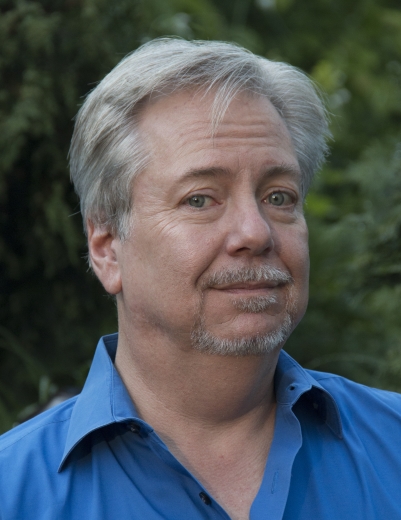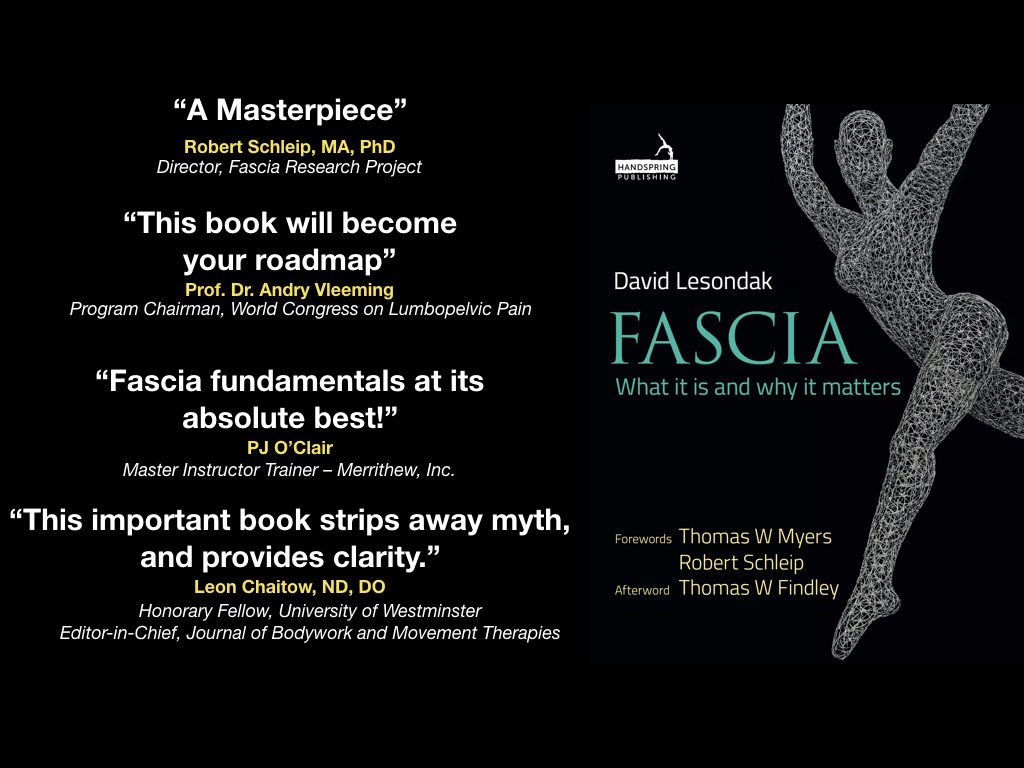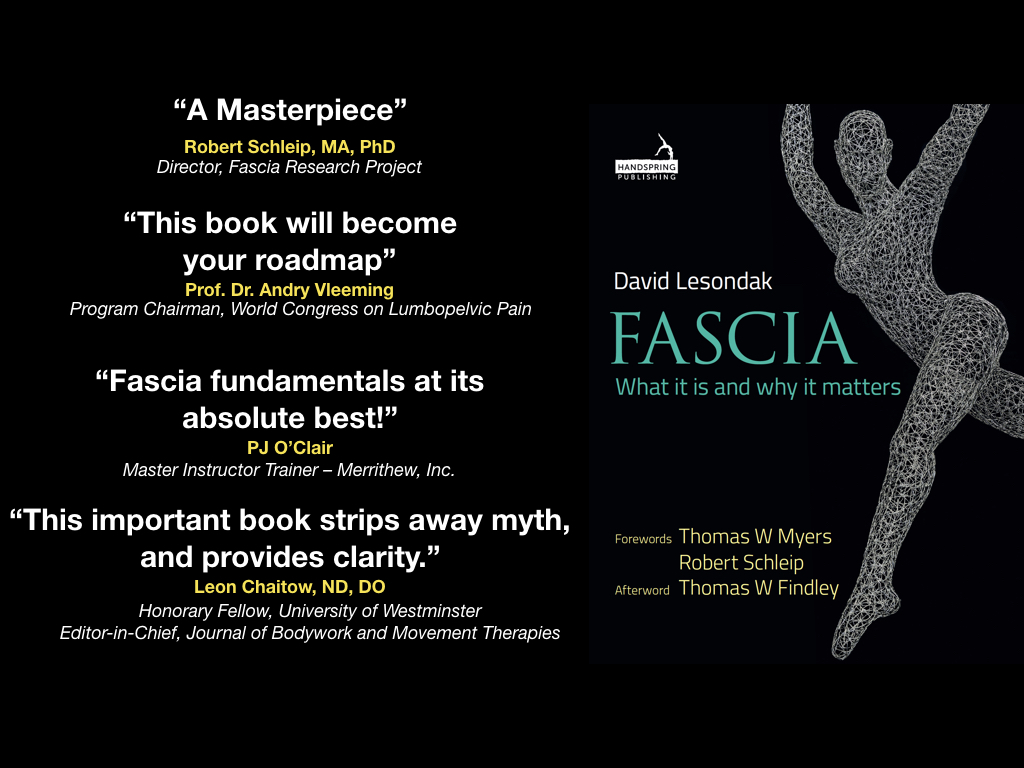Following is an interview that Terra Rosa had with David Lesondak about his new book on fascia…
FASCIA – What It Is and Why It Matters
In his new bestseller about the body’s connective tissue, David Lesondak succeeds in making the obscure informative and entertaining. We spoke with David about his book.

David Lesondak, author of Fascia – What It Is and Why It Matters
Can you tell us a bit about yourself?
I’m a structural integrator and multi-modality fascial specialist at the University of Pittsburgh Medical Centre’s Department of Integrative Medicine. I also love to teach and lecture on fascia every chance I get. It keeps me busy. I also write songs, and have a band. We didn’t play at all during the time I was writing and producing the book.
What made you write the book?
There seemed to be a real need for it. Fascia is a huge topic. Many of the fascia books are tied to a technique or specific therapeutic approach, and that’s fine. The more scholarly tomes are quite chewy, and usually have multiple authors which means multiple writing styles. After a while it can start to numb your brain. I was looking to split the difference. Keep the science accurate, of course, but also keep the reader engaged.
There are so many books on Fascia nowadays. What makes yours different?
Reader engagement! It’s got a pretty strong story line. Every chapter has a distinct beginning, middle, and end. And, like a good book, the end of the chapter sets up the next chapter. And certain elements, themes, and even characters – yes! mechanotransduction is a character, might make “guest appearances” in later chapters. Each chapter works as a self-contained whole, but together they tell a bigger story.
The structure I came up with gave me the opportunity to choose where to drop certain pieces of information to have the most impact on the reader. As opposed to bludgeoning them with facts. I want to get them really thinking about things so they have that “A-Ha!” moment. And sometimes that moment might be several pages, or several chapters, later.
Digital COMT
Did you know that Digital COMT (Digital Clinical Orthopedic Manual Therapy), Dr. Joe Muscolino’s continuing education video streaming subscription service for massage therapists (and all manual therapists) and movement professionals, has six folders with video lessons on Manual Therapy Treatment, including an entire folder on Stretching, as well as a folder on Pathomechanics, another on Anatomy, and many more? Digital COMT adds seven new video lessons each and every week. And nothing ever goes away! Click here for more information.
It’s spectacularly illustrated, and I think people are going to see some things they’ve never seen before. The cover image is stunning. It’s the work of a sculptor name Michael Gard and expertly photographed by my friend Rob Strovers.
Also, I think, as a clinician who teaches, works with doctors, is a devoted yogi, and goes to the research conferences, all those experiences have allowed me to write something that speaks to everyone. There’s a lot of context to go with the content. So, physicians, PTs, yoga folk, massage therapists, non-professionals who have a strong interest in learning about the body – they’re all going to come away with knowledge that will make them not only smarter about the body, but with a new sense of wonder about it too.

Front and back covers of Fascia – What It Is and Why It Matters
Some said we have been overemphasizing on fascia and forget the larger picture , fascia is one of many pieces of stuff that the brain uses to organize our movement.
Well, historically-speaking, fascia’s the new kid on the block. Interest is high, it’s the new hot thing. So there’s going to be a backlash. I’m okay with that. But for me, fascia is the big picture. It’s a tissue and a system and it has connections from each individual cell all the way to the brain. So to only look at it only from a standpoint of movement organization is to miss a lot.
Which part of the book do you like most?
You ask tough questions! Each chapter had unique challenges, so there was a great satisfaction to figuring out how to surmount those challenges. But… I’d have to say chapter 2, about tensegrity, and the cell, is a real fave. Probably because the bulk of that chapter flowed out during a long plane ride. You remember those moments in the zone, because they are rare. Personally, I dearly love Chapter 5, about fascia and the brain, and I think some of the neuroscience in that will be new to a lot of people. I had some imaging and research labs very generously supply me with some great images for it too.
What’s the relationship between meditation or mind-body connection & fascia?
Well nitric oxide cause fascia to relax. Meditation, among other physiological changes, increases the production of nitric oxide in the body. And a little-known study showed a positive change in perception of pain in people with low back pain who meditated. I see a pretty obvious connection there, though I would love to study it in depth. If somebody reading wants to send me a grant, I invite you to contact me through my publisher!
Can the body change the brain?
Well, we had a pretty well-functioning body before we developed our cerebral cortex. There’s this whole school of thought that suggests the peripheral nervous system helped develop the brain as we know it. And how many times do you see that exercise may be the best anti-depressant going? So yes, absolutely! I think it happens all the time.
FASCIA – What It Is and Why It Matters can be purchased here.
(Click here for a blog post article on fascial adhesions.)


